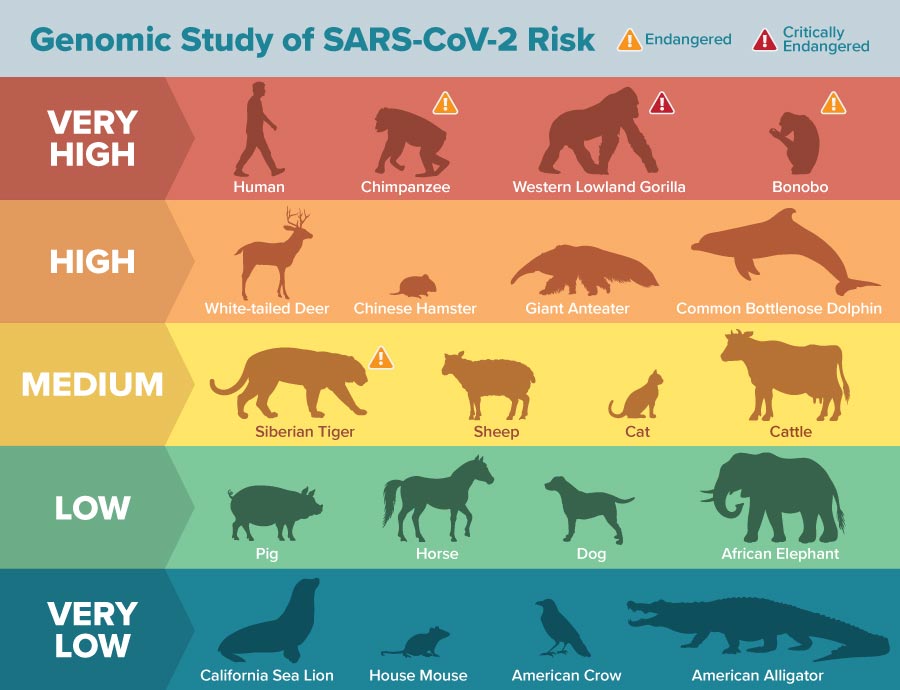A recent study has shown that several endangered species like gorillas, orangutans, gibbons, grey whales and bottlenose dolphins, and Chinese hamsters, are at a higher risk of getting infected by the novel coronavirus.
Domesticated animals such as cats, cattle and sheep are found to have a medium risk of contracting the virus, while dogs, horses and pigs are found to have a low risk. Researchers in the University of California, Davis (UC DAVIS) predict that endangered animals are at a higher risk of contracting the virus.
ACE2, Angiotensin-converting enzyme-2 is the main cellular receptor is the main viral target in human beings. Almost 410 species contain this enzyme which is made up of 25 amino acids and the viral spike protein needs to bind to all of them to cause an infection. Scientists have found that animals with all 25 amino acid residues matching the human protein are predicted to be at the highest risk for contracting COVID-19 via the ACE2 receptor, using molecular modelling.
Several critically-endangered primate species, such as the Western lowland gorilla, Sumatran orangutan and Northern white-cheeked gibbon, are predicted to be at very high risk of infection by COVID-19 via their ACE2 receptor.

